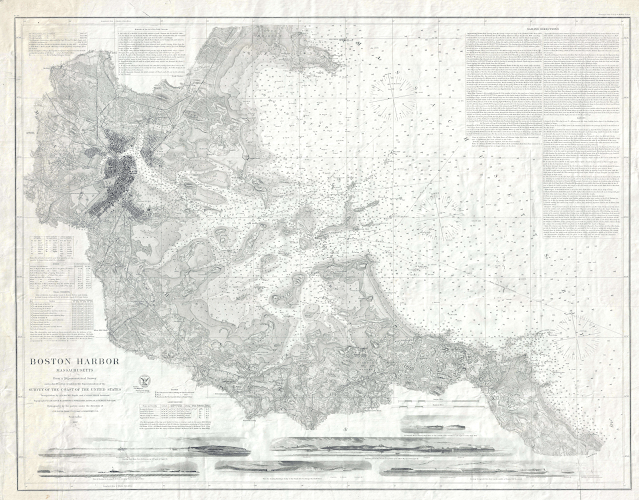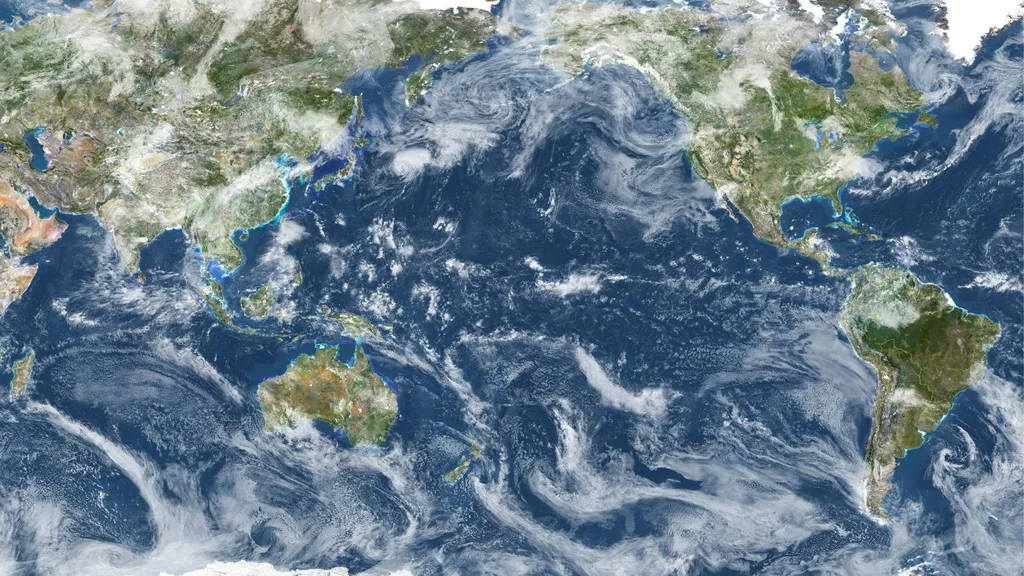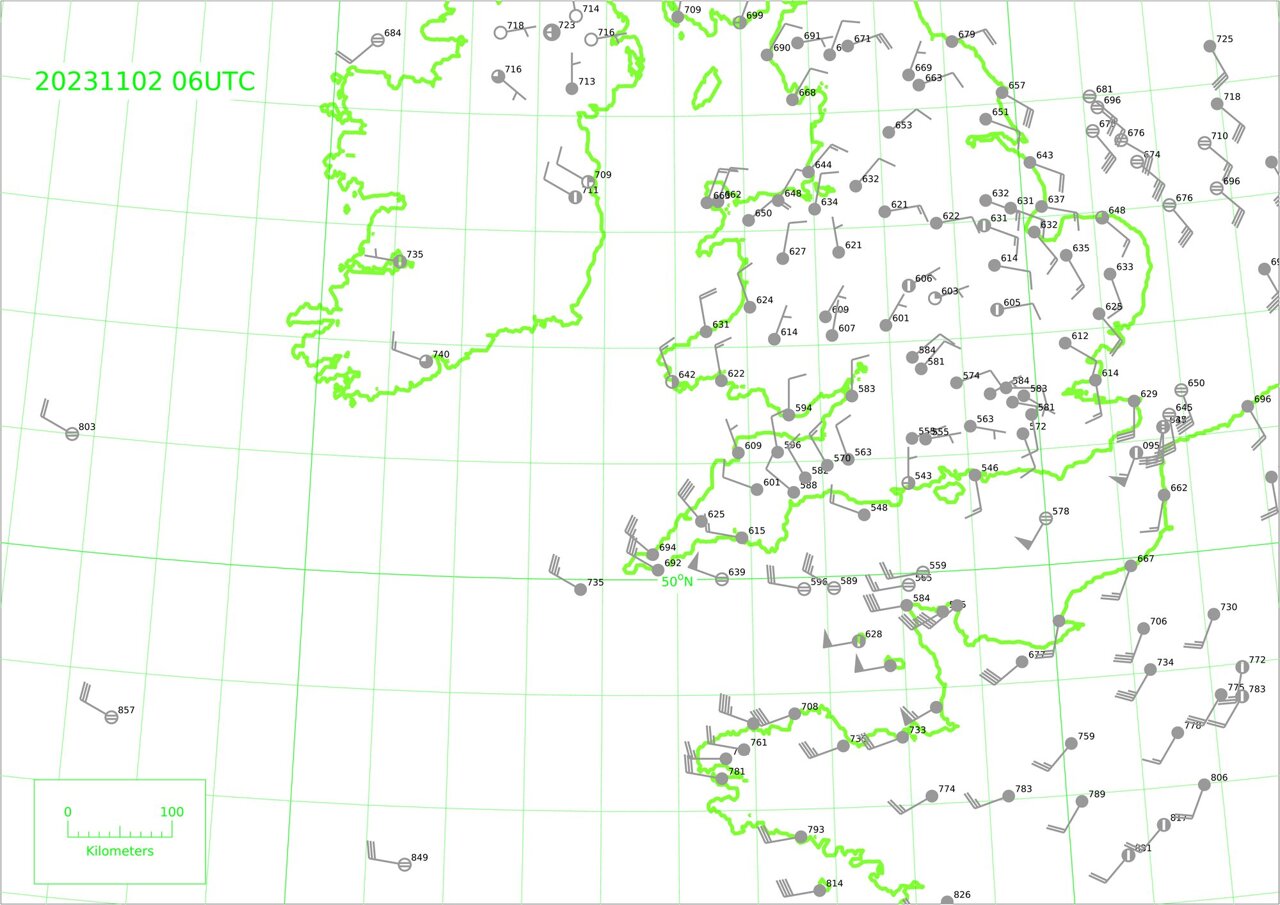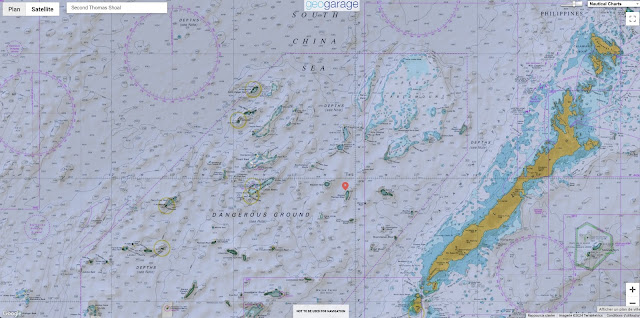Saturday, May 4, 2024
Nautical chart of Boston harbor (1775)
Friday, May 3, 2024
Proud seafarers have strong doubts about the safety of autonomy
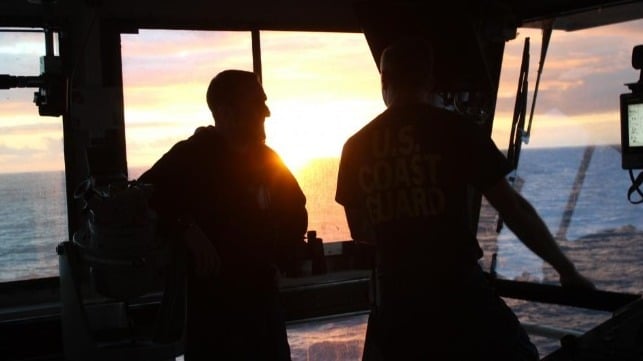
Moreover, the greater the professional commitment and pride of the bridge officers, the less confidence they have in automation increasing safety at sea.
Professional pride and commitment are often deeply ingrained in seafarers, and for many, the job is more of a way of life.
New technologies will bring about major changes in the work of bridge officers, who have the ultimate responsibility on board Norwegian vessels.
However, there is strong skepticism, almost mistrust, that increased automation and autonomous (meaning self-driving) ships will contribute positively to safety,” says Asbjørn Lein Aalberg, a PhD candidate at NTNU’s Department of Industrial Economics and Technology Management and SINTEF Digital.
The study ‘Pride and mistrust? The association between maritime bridge crew officers’ professional commitment and trust in autonomy’ was recently published in the WMU Journal of Maritime Affairs.
The research was conducted in collaboration with the Norwegian Maritime Authority and Safetec.
This is probably the largest survey in this field to date, both nationally and internationally.
Aalberg believes that in order for operations to be as safe as possible, employees are needed who know how to control and monitor this automation.
We need their engagement, willingness and interest to ensure that the technology and systems being developed are fit for purpose,” says the researcher.
Few women in the sample
Aalberg has taken a closer look at the answers given by captains and
navigators on board.
Collectively, this group consists of 1789 Norwegian
and 227 international bridge officers of all ages, with everything from
0 to more than 26 years of experience.
Women constitute only 11 percent
of Norwegian seafarers, and only 2.4 per cent of the participants in
this survey.
“This probably reflects the fact that there are even fewer women among the people working on the ship’s bridge,” says Aalberg. Among other things, the bridge officers were asked about:
- Their thoughts and feelings about the automation of work tasks
- Their confidence in autonomous technology
- Their professional commitment and pride
- Their own management work related to safety
Seafarers with an extreme sense of duty
Aalberg says that bridge officers are very proud of their work and exhibit what he would call a rather extreme sense of duty to their own profession.
“This pride may lead to additional mistrust when faced with radical
changes.
In fact, we found that those who take the greatest pride in
their profession are most sceptical about technological developments,”
says the researcher.
Another finding that he finds quite alarming is this: among the bridge officers who take the greatest pride in their profession, it is the younger ones who have the least faith in autonomy.
“When envisioning their future career, maybe they feel like they have more to lose,” says Aalberg.
One of the oldest professions in the world
This area has seen little research, and Aalberg says we don’t
currently know enough about why seafarers exhibit such strong mistrust.
One reason for this is that there are currently not many autonomous
ships, and they are a hot topic of speculation and debate.
It is
therefore important to emphasize that different points of view may be
based on rumors, vague impressions and unfounded notions of what the
changes will entail.
It is also often the case that autonomous vessels are spoken
positively about by individuals who are relative newcomers to the
maritime industry.
The survey indicates that this could spark
uncertainty among seafarers, both in terms of the motives and intentions
behind autonomy.
“Despite the fact that there seems to be a great need for seafarers
in the future, some people may be afraid of losing their jobs.
But I
think the skepticism is more about the changes being made to the nature
of their work.
For example, there would be a great deal of uncertainty
among captains if the position were to lose its independence.
We must
not forget that the maritime profession has a very long tradition, where
a captain’s authority and control have always been strong,” Aalberg
says.
Researcher Asbjørn Lein Aalberg hopes authorities can use the
research results in dialogue with shipping companies and technology
providers.
He says that these different groups should include seafarers
when developing new concepts and technological solutions.
Professional discretion
The PhD candidate has also interviewed 31 Norwegian seafarers on
board highly automated Norwegian passenger ferries about
their confidence in the advanced automated systems that have been
installed.
This study gives some hints about what it takes for bridge
officers to trust advanced technology.
Among other things, it relates to
their lack of trust in the machines’ ability to demonstrate true
‘seamanship’ and exercise professional discretion in traffic.
In
addition, the interviewees did not believe that the machines will manage
emergency situations well enough.
All in all, they believe that people
are best suited to making decisions in complicated situations.
“The reason they still trust autopilots and similar systems is that they themselves have control and the option to turn them on or off as and when they see fit,” Aalberg says.
The shipping company and technology developers have also had a very long and ultimately successful development process that he believes is needed to satisfy proud seafarers.
However, all the informants were skeptical about the impending changes and expressed concern that increased automation would compromise safety at sea.
Autopilot is ok, autonomy is not
The studies show that bridge officers make a clear distinction
between automation and autonomy.
Automation involves machines taking
over some of their tasks, while autonomy, taken to its ultimate
conclusion, means unmanned ships.
Aalberg provides a nuanced perspective on the development.
“Many researchers argue that humans will play a crucial role in
human-automation collaboration, even on autonomous ships.
Previously,
there was more talk about removing people altogether, to put it
bluntly,” says the researcher.
Seafarers must be consulted
He hopes the authorities can use the results of the research in
dialogue with shipping companies and technology providers.
He says they
should include seafarers when developing new concepts and technological
solutions.
“They have to make, and talk about, innovations in such a way that it sparks interest instead of skepticism,” he says.
He also believes that projects involving technological development should openly share real results from testing in order to provide a nuanced perspective of what seafarers may see as as being overly idealized.
“We also know that seafarers gain trust in advanced technology by
trying the technology themselves.
Keynote speakers or even colleagues
talking about the systems is simply not enough.
They want to try them
themselves and see if the automation makes the same choices that they
would have made, so perhaps the development process should be structured
accordingly,” Aalberg says.
Thursday, May 2, 2024
There’s something very fishy about the global seafood supply
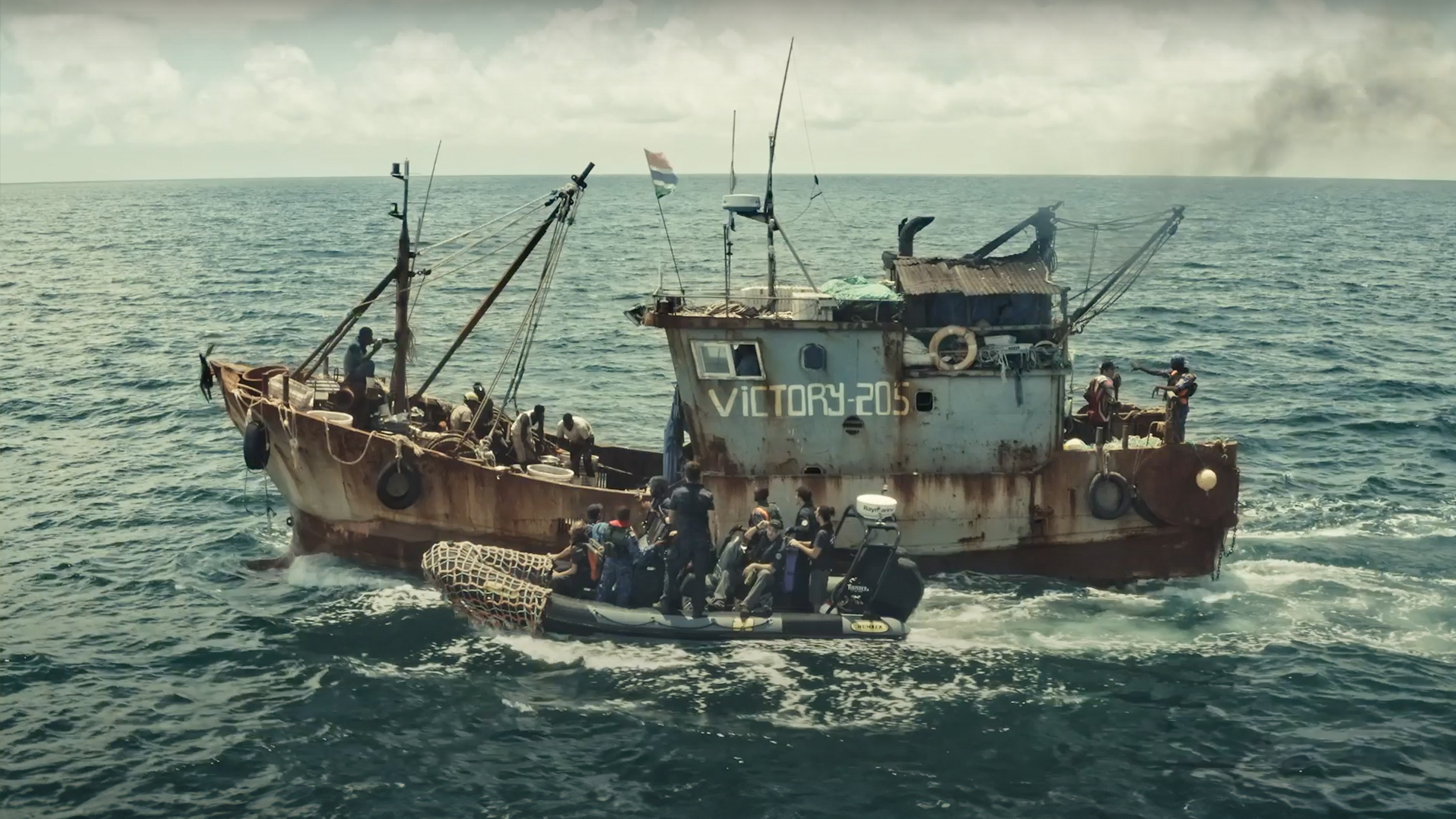
Fábio Nascimento for The Outlaw Ocean Project
From Time by Ian Urbina
The past half year has seen a steady stream of disturbing reports about serious human rights abuses tied to industrial fishing.
First came a long expose about forced labor at sea tied to hundreds of Chinese fishing ships that supply many of the biggest restaurant and grocery store chains in the U.S. and Europe.
Then the investigations moved on land, exposing the widespread use by Chinese processing plants of state-sponsored forced labor—specifically North Korean and Uyghur workers, both of which are strictly banned from being tied to any products imported into the U.S.
This epic investigation that we just published about an unusually brave whistleblower in India & what we found in the massive trove of documents he provided us.
A whistleblower, named Joshua Farinella, leaked thousands of pages of internal documents, invoices, emails, recorded zoom calls, security footage, whats app exchanges tied to a shrimp processing plant where he was the manager.
The story, which was published by Outlaw Ocean Project which I founded, was important for Americans since a third of the shrimp they eat comes from India.
The documents seem to back up the whistleblower’s statements and raise a variety of serious concerns about human rights abuses tied to workers at the Indian plant as well as food safety issues relating to shrimp possibly having been shipped to the US that tested positive for antibiotics.
The whistleblower is an American and a longtime seafood industry executive, and he showed unusual bravery in leaking the documents since he likely just threw his entire career away in doing so.
Aside from talking to reporters, he followed other proper channels, by filing federal whistleblower complaints to law enforcement officials at the State Department, Customs and Border Patrol, the Labor Department and the FDA, who have already spoken with him and begun investigating.
Congress formally wrote the whistleblower to request the documents as they too intend to investigate the plant.
That is often a precursor to hearings.
For the risks taken and bravery shown in leaking the documents, podcasters have dubbed the whistleblower, the “Snowden of Seafood”, and he has also been hailed publicly as a “superhero” by a variety of advocates and others, including the Hulk.
(The actor Mark Ruffalo posted a message saying the whistleblower was a real-life superhero for his actions).
The company at the center of the disclosures takes a different view and has categorically denied that it did anything illegal or unethical.
The story about conditions at the shrimp plant in India come against a broader backdrop.
The same week that the whistleblower documents were published, the Corporate Accountability Lab, which is an advocacy group of lawyers and researchers, released a report detailing severe cases of captive and forced labor as well as environmental concerns often tied to wastewater at a variety of other shrimp plants in India.
Behind the Story: A Whistleblower Investigation From Antarctica to India | The Outlaw Ocean Project
It’s worth remembering the history here.
The New York Times and the Associated Press covered the issue extensively a decade ago, especially tied to Thailand.
Even before that, a human rights NGO called the Environmental Justice Foundation revealed in 2013 widespread problems with forced and child labor in Thai shrimp.
The EJF report and subsequent news coverage spurred a series of sweeping reforms by the Thai government to better protect workers from such abuses.
But these reforms came with a price, leading to escalating labor costs in Thailand right when nearly half of the country’s shrimp production was wiped out by a disease.
India emerged to fill the void, with help from its government which bolstered subsidies and loosened laws restricting foreign investment.
By 2021, India was exporting more than $5 billion of shrimp globally, and was responsible for nearly a quarter of the world’s shrimp exports.
And yet, here we are again: the seafood problems previously highlighted in Thailand are now being widely revealed in China and India.
Part of the problem with global seafood is that companies and governments barely know where these ships are working, much less how they are behaving.
A new study published in the journal Nature in January 2024 revealed that 75 percent of the world’s industrial fishing fleet are not publicly tracked.
The study, using machine learning and satellite imagery, detected vessel activity at sea that was previously “dark” in marine protected areas and in countries' waters that previously showed significantly less of a fishing footprint.
If we dont know where the ships are, we surely dont know if the workers on them are trafficked.
Even on land, companies and governments are minimally informed about what is happening at the fish farms and processing plants partly because the audits that are meant to verify ethical and legal conditions tied to worker treatment, food safety, and ocean sustainability are deeply flawed.
These experts also say companies need to stop relying on auditing firms that claim to be checking for things in places (like India and China) where they actually have limited capacity to do so effectively.
Until then, the rotten smell inside this industry is likely going to get worse.
- Conservation Int : New consortium will support human rights risk assessments within global seafood chains
- Pulitzer Center : China: The Superpower of Seafood
- YouTube : The North Koreans Behind the World’s Seafood | The Outlaw Ocean Project
- GeoGarage blog : Global Fishing Watch: Raising awareness of the impacts ... / The Outlaw ocean / The origin of North Korea's 'ghost boats' / Stowaways and crimes aboard a scofflaw ship /
Wednesday, May 1, 2024
‘Cold tongue’: what the Pacific Ocean cool patch mystery says about climate change
(Image credit: Planet Observer/Universal Images Group via Getty Images)
From The Week by Arion McNicholl
One part of the Pacific Ocean is baffling scientists, but the broad trajectory of oceanic temperatures remains clear
A thin stretch of the eastern Pacific Ocean has been getting colder for the past 30 years, defying the broad global trend and baffling scientists.
The anomaly, known as the “equatorial cold tongue”, is affecting an area that extends west from the coast of Ecuador for thousands of miles.
Over at least three decades the region has cooled by roughly half a degree and it “has scientists wondering how long that will hold”, said The Atlantic.
What is causing the ‘cold tongue’?
Scientists are not entirely certain what is keeping the “cold tongue” cool.
“The trade winds blow from east to west across the tropical Pacific Ocean,” Seager told Newsweek. “Because of the rotation of the Earth, the winds drive waters northward to the north of the Equator and southward to the south of the Equator. As the waters are driven away from the Equator, water is pumped up from below and since the waters below the surface are cold this creates the equatorial Pacific cold tongue.”
Yet despite the effect of these winds, the cold tongue has “puzzled scientists”, Newsweek said, “because advanced climate computer models suggest that the waters should have been warming for decades at a faster rate than the rest of the Pacific due to rising greenhouse gas emissions”.
Other hypotheses suggest that the answer may be found in the cold seas of the Southern Ocean around Antarctica, which have also seen sea surface temperatures decline in recent decades.
Suspected drivers include the melting of Antarctic glaciers as global temperatures rise, and ozone depletion in conjunction with rising greenhouse gas emissions, which are intensifying the movement of cold air from Antarctica.
Not knowing what is causing it “means we also don’t know when it will stop, or whether it will suddenly flip over into warming”, New Scientist added.
More profoundly still, “it could even alter the extent of climate change globally”, the site said, “by tweaking how sensitive Earth’s atmosphere is to rising greenhouse gas emissions”.
What are its effects on wildlife?
As well as the climate-related questions it presents, the cold tongue is also of interest to biologists, particularly in relation to the Galápagos Islands, which lie about 600 miles off Ecuador.
This is because the “cold, nutrient-rich water” of the cold tongue has become a “prosperous patch [that] feeds phytoplankton and breathes life into the archipelago”, said The Atlantic.
According to Judith Denkinger, a marine ecologist at the Universidad San Francisco de Quito in Ecuador, the ecological impacts of the cold tongue are profound.
“The cool water sustains populations of penguins, marine iguanas, sea lions, fur seals, and cetaceans that would not be able to stay on the equator year-round,” Denkinger told The Atlantic.
Colder temperatures can also “inhibit coral growth rates” and “fish may experience shifts in their distribution due to changes in water temperature, which can also affect their metabolism and reproduction”, said Brilliantio in its explainer on temperature in the Pacific Ocean.
As well as the cold tongue, other pockets of cool oceanic water sporadically present themselves, such as an area of the Pacific Ocean near San Francisco that has recently been the coldest it’s been in more than a decade.
Despite this, the overall direction of ocean temperatures is going up, said Ryan Walter, associate professor at California Polytechnic State University.
Solving the puzzle of the cold tongue “isn’t about proving climate models wrong”, said New Scientist.
“Rather, the cold tongue is the last big piece of the puzzle. Fit that in and we can build a more accurate picture of how life will change in a warming world – and how best to prepare for that future.”
- NewScientist : Something strange is happening in the Pacific and we must find out why
- ResearchGate : Is the Pacific Cold Tongue a greater immediate threat to the world’s climate than the increase in global temperature?
- Nature : Two annual cycles of the Pacific cold tongue under orbital precession / Emergent constraints on future projections of the western North Pacific Subtropical High
- Colombia Climate School : Part of the Pacific Ocean Is Not Warming as Expected. Why?
- Newsweek : Mystery Stretch of the Pacific Ocean Is Not Warming Like the Rest of the World's Waters
Tuesday, April 30, 2024
AI quickly and accurately predicts major storms’ path and intensity, University of Reading finds
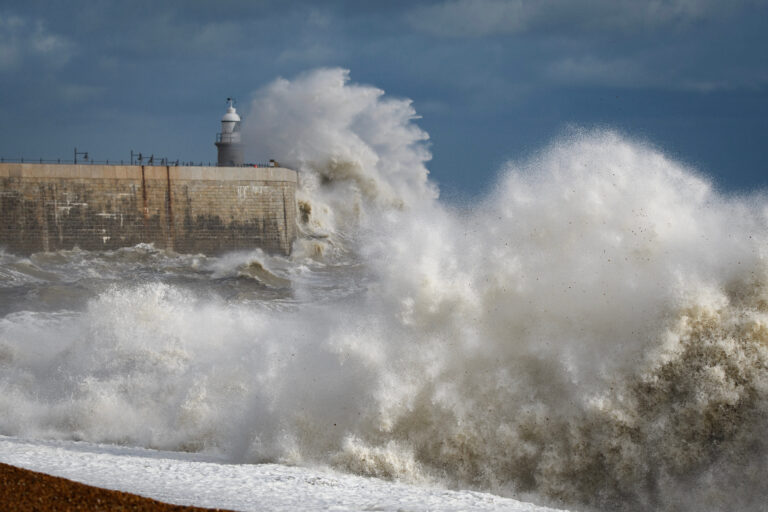
From Meteo Tech Int by Elisabeth Baker
The University of Reading has released a study that highlights the rapid progress and transformative potential of artificial intelligence (AI) in weather prediction through an analysis of November 2023’s Storm Ciaran.
Machine learning in weather prediction
According to the researchers, AI can quickly and accurately predict the path and intensity of major storms.
The University of Reading study has now been published in npj Climate and Atmospheric Science.
Professor Andrew Charlton-Perez, who led the study, said, “AI is transforming weather forecasting before our eyes.
“There is a great deal we can learn about AI weather forecasts by stress-testing them on extreme events like Storm Ciarán. We can identify their strengths and weaknesses and guide the development of even better AI forecasting technology to help protect people and property. This is an exciting and important time for weather forecasting.”
Promise and pitfalls
To understand the effectiveness of AI-based weather models, scientists from the University of Reading compared AI and physics-based forecasts of Storm Ciarán – a windstorm that hit northern and central Europe in November 2023 which claimed 16 lives in northern Europe and left more than a million homes without power in France.
The researchers used four AI models and compared their results with traditional physics-based models. The AI models, developed by companies like Google, Nvidia and Huawei, were able to predict the storm’s rapid intensification and track 48 hours in advance.
The ML technology underestimated the storm’s damaging winds, however.
To better protect people from extreme weather like Storm Ciaran, the researchers say further investigation of the use of AI in weather prediction is urgently needed to save forecasters time and money.
- MetTechInt : DTN releases AI-powered tropical storm forecast model
- Nature : Do AI models produce better weather forecasts than physics-based models? A quantitative evaluation case study of Storm Ciarán
- MeteoRed : How well can AI weather forecast models predict extreme events like Storm Ciarán?
- GeoGarage blog : Google DeepMind's AI weather forecaster handily beats a ... / The danger of leaving weatherprediction to AI / How the latest advances in machine learning are enabling ... / AI breakthroughs could improve weather forecasts / AI hurricane predictions are storming the world of weather ... / Google AI model outperforms traditional methods of ... / IBM extends NASA collaboration to apply generative AI to weather / How NASA, NOAA and AI might save the internet from ... / New model based on Artificial Intelligence available in ... / AI on the high seas: Digital transformation is revolutionizing ... / Better weather forecasts coming to the developing world
Monday, April 29, 2024
Asia’s next war could be triggered by a rusting warship on a disputed reef
From WashingtonPost by Rebecca Tan, Regine Cabato and Laris Karklis
Asia’s next war could be triggered by a rusting warship on a disputed reef
In the most hotly contested waterway in the world, the risk of Asia’s next war hinges increasingly on a ramshackle ship past her time, pockmarked with holes, streaked with rust and beached on a reef.
To buttress its claims in the South China Sea, the Philippines in 1999 deliberately ran aground a World War II-era landing ship on a half-submerged shoal, establishing the vessel as an outpost of the Philippine navy.
(Video: Armed Forces of the Philippines)
China claims the vast majority of the South China Sea and, in recent months, has ramped up efforts to prevent the Philippines from providing supplies to personnel aboard the Sierra Madre.
The Chinese vessels have also increasingly deployed water cannons at close-range, at times disabling Philippine ships and injuring sailors.
(Video: Armed Forces of the Philippines)
Biden administration officials have stressed that an armed attack on a Philippine military vessel, such as the Sierra Madre, would trigger a U.S. military response under a 1951 mutual defense treaty.
Philippine President Ferdinand Marcos Jr. said after meeting with President Bidenin Washington earlier this month that the killing of Philippine service members by a foreign power would also be grounds to invoke the treaty.
China has spent the past three decades expanding its presence in the South China Sea, a strategic waterway through which a third of global shipping passes, according to the United Nations.
Beijing may not intend to start a war here, analysts say, but repeated confrontations at sea between vessels have raised the potential for fateful accidents, also potentially provoking a U.S. response.
Adding to the uncertainty is the question of what to do with the 328-foot Sierra Madre, which is no longer seaworthy and badly degraded after decades of exposure to the elements.
The Chinese say replacing the ship with a more permanent structure is unacceptable.
But in interviews, top Philippine officials said emphatically they will not give up control of Second Thomas Shoal.
At no time in recent decades have geopolitical tensions in the South China Sea reached such a prolonged and precarious state as they have recently at Second Thomas Shoal, said Harrison Prétat, deputy director of the Asia Maritime Transparency Initiative (AMTI) at the D.C.-based Center for Strategic and International Studies.
The dispute over that shoal — one of dozens of contested islands, reefs and other features — is part of an increasingly perilous competition among the countries that border the South China Sea for sovereignty over these strategic waters and control of the energy and other resources that lie below.
Trouble in the South China Sea
Tensions in the South China Sea have grown more intense than at any time in recent years.
Under President Xi Jinping, China has become more aggressive in asserting sovereignty over the sea’s contested islands, rocks, reefs and other features and the strategic waters that surround them.
A half dozen other countries that border the sea have also been pursuing their own claims and economic interests.
About one-third of the world’s trade passes through the South China sea, according to the U.N., including crucial energy supplies for U.S.
allies Japan and South Korea.
The sea also includes oil and natural gas reserves as well as valuable fishing grounds, coral and minerals.
The U.S.
has not formally endorsed any of these claims, urging that disputes be settled on the basis of international law.
The U.S.
insists on freedom of navigation through these contested waters and has repeatedly sailed warships through them to assert that right.
As China under leader Xi Jinping has grown ever more aggressive in pursuing its claims, Southeast Asian countries such as the Philippines, Vietnam and Malaysia have been taking steps — some in public, some largely below the radar — to assert their own claims and pursue their own economic interests, potentially bringing the region closer to war than at any time in years.
Before every mission to resupply the Sierra Madre, Marcos is briefed, said Philippine officials, as is the U.S. ambassador to the Philippines, according to U.S. officials.
The United States has significantly increased its deployment of Navy personnel in the Philippines in direct response to the situation at the Sierra Madre, said a U.S. State Department official.
Not since the siege of Marawi in 2017, when Islamic State-affiliated rebels seized a town in the Philippine south, has the United States provided such extensive support for a Philippine military operation, said the official, who spoke on the condition of anonymity because he had not been authorized to speak publicly on the issue.
To many in the Philippines, Chinese behavior at Second Thomas Shoal, which they call Ayungin Shoal, has become a symbol of Beijing’s increasingly brazen projection of power.
Orlando Mercado, a former Philippine secretary of defense, called it “the biggest, most graphic illustration of bullying.”
(Video: Armed Forces of the Philippines)
“What’s happening in the West Philippine Sea is only a microcosm of what China wants to do to the world,” Trinidad added, using the Philippine name for the waters that it claims.
The Chinese Embassy in the Philippines declined requests for interviews and responded to questions by pointing to a previous statement saying that the Philippines has been violating China’s sovereignty.
“We demand that the Philippines tow away the warship,” the statement said.
Until it is removed, the statement added, China will “allow” resupply missions only if “the Philippines informs China in advance and after on-site verification is conducted.”
These vessels have loitered around the Sierra Madre for years but began to surge in number in 2023, according to ship location data tracked by AMTI.
In 2021, China on average deployed only a single ship each time the Philippines conducted one of its resupply missions, which are carried out by civilian boats staffed with navy personnel.
By 2023, the average had jumped to 14.
During one mission last December, researchers found at least 46 Chinese ships patrolling Second Thomas Shoal.
The analysis on ships involved for those incidents has not been completed at this time.
Source: CSIS/AMTI, Starboard Maritime Intelligence
During the Dec. 10 resupply mission, Chinese ships largely based at nearby Mischief Reef tried to form a “blockade” at a greater distance from Second Thomas Shoal than before, said Ray Powell, director of SeaLight at Stanford University’s Gordian Knot Center for National Security Innovation.
“They made the approach as tense and as difficult as possible.”
Videos from that day show that as one of the four Philippine ships, M/L Kalayaan, began to near Second Thomas, two significantly larger Chinese vessels pulled up on either side of it, and one blasted it with a water cannon.
The M/L Kalayaan’s engine was damaged and had to be towed back to shore, according to Philippine officials.
The vessel could not reach Second Thomas, though another Philippine ship, the Unaizah May 4, made it through.
10, 2023.
During a resupply mission on March 5, two Chinese vessels deployed water cannons within several feet of the Philippine ship, shattering its windscreen and injuring four sailors on board.
The Unaizah May 4 returned to shore without delivering its cargo.
When it tried again three weeks later, it was again targeted by water cannons.
This time, the Chinese ships “didn’t stop until the vessel was entirely disabled,” said a Philippine military official who spoke on the condition of anonymity to share undisclosed details of the incident.
The water cannons caused the ship to lose propulsion and wrecked its wooden hull, forcing the crew to transport the supplies to the Sierra Madre on inflatable dinghies.
When the Chinese boats came close, the official added, Chinese personnel on board also yelled at the Philippine crew.
“They were shouting at us, saying, ‘Construction? Construction?’” said the official.
CAUGHT ON CAM: A GMA Integrated News Exclusive: “Tama na, Lord!” Horror as China Coast water cannons Philippine resupply ship @24OrasGMA @gmanews pic.twitter.com/rUIKi8ws8O
— Joseph Morong 🇵🇭 (@Joseph_Morong) March 25, 2024
Philippine officials deny this.
Since last October, the Philippines has been conducting “superficial repairs” to the Sierra Madre to ensure habitability for soldiers, but it has not been constructing a new outpost, say officials.
With several Philippine resupply ships damaged and concerns growing over the escalating violence, Philippine officials said they have been rethinking how best to conduct the missions.
“We will not be deterred,” said Trinidad, the navy spokesman.
But neither, say security analysts, will the Chinese.
About this story:
To map the behavior of Chinese and Philippine vessels, The Washington Post drew upon data collected by the Asia Maritime Transparency Initiative at the Center for Strategic and International Studies, and the Gordian Knot Center for National Security Innovation at Stanford University
Both organizations track vessels based on location information transmitted by their Automated Identification System (AIS).
Researchers say the data paints a representative picture of ship behavior but is incomplete because not all ships turn on their AIS.
Chinese vessels, in particular, are known to turn off the AIS, or “go dark,” in the South China Sea.
Links :
- The Guardian : Why the rusting wreck of a second world war ship is so important to China / US and China spar over Philippine shipwreck-turned-military outpost
- NYTImes : The beached Philippine ship is angering China
- Reuters : China says it allowed airdrop to disputed shoal, prompting rebuke by Manila / Philippines says refurbishing grounded ship an option to strengthen hold on disputed shoal
- War on Rocks : It's time to build combined forward operating base Sierra Madre
- Business Insider : See the rusting warship central to the Philippines' South China Sea claims that Beijing tries to keep from holding on
- SMCP : Why is a rusty old Philippine warship involved in the South China Sea dispute?
- FT : The rusting Philippine ship forcing Joe Biden and his Asia allies to focus on China
- Inquirer : Ex-pres’l spokesman Roque proposes decommissioning of BRP Sierra Madre / Sierra Madre repairs made despite Duterte deal / PH Navy airdrops supplies to BRP Sierra Madre
- Washington Examiner : US should help the Philippines replace the BRP Sierra Madre
- Maritime Executive : Philippines Budgets for a Permanent Base at Second Thomas Shoal / The Philippine Base at Second Thomas Shoal Will Have to Be Replaced
- The Diplomat : Who Promised to Remove the Grounded Philippine Ship on Second Thomas Shoal?
- WSJ : China, a U.S. Ally and the Fight Over an Old Rusty Ship
- Manilla Times : PH, China reached 'understanding' in Ayungin row, embassy claims
- GeoGarage blog : South China Sea tension mounts near Filipino shipwreck / The Philippine maritime zone


